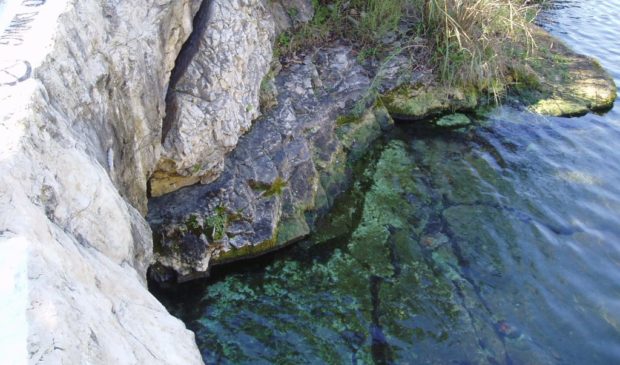After 20 years the city protects 25 percent of the Barton Springs recharge zone
Tuesday, September 18, 2018 by
Jessi Devenyns Since 1998, the city of Austin has been working diligently to preserve and care for the crown jewel of our city: Barton Springs.
Doing so involves a lot more than draining and cleaning the pool every so often. According to Sherri Kuhl, the environmental conservation division manager at Austin Water, it in large part involves protecting 28,360 acres of upstream land, and in particular those lands surrounding Onion Creek.
The Barton Springs recharge zone is a large space to protect. It is a part of the Edwards Aquifer close to home, but there are also the miles of the contributing zone where dozens of creeks flow across the land before they hit the recharge zone and go underground.
For years, studies have shown that one of the best ways to protect the water quality in aquifers is to keep development from the lands that conduct the tributaries into the underground springs. Following this advice, in 1998 the city of Austin chose to use bond money to begin a concentrated effort to make large land purchases; the city also purchased development rights from private landowners. Today, the almost 30,000 protected acres include 25 percent of the recharge zone.
At the Sept. 12 meeting of the Water and Wastewater Commission, Kuhl said that purchasing this much land would be nigh impossible now. “We were able to buy land for a much lower cost than that land is for sale now,” she said. The city used bond money to outright purchase land for around $1,000 an acre back in the late 1990s, and she explained that much of the acreage was purchased as conservation easements. Today, 62 percent of the protected land is private land “that people continue to live on and operate.” According to Kuhl, the city of Austin just owns development rights. “That’s a more cost-effective way that makes our dollars go further,” she said.
Although the land is now in the care of the city, there is still much that needs to be done to make sure that proper care is taken. The city routinely conducts prescribed fires, brush thinning, and cave excavation in an effort to maintain the land in an optimal state. Their efforts help slow down water for infiltration, prevent erosion, and remove pollutants – much of which would end up downstream in the city pool if the land was left unmanaged.
The funding for these maintenance efforts is no longer strictly through bonds. Austin Water Assistant Director Daryl Slusher informed the commission that although bonds still play a part, there is a larger mixture of funds including directly from the Austin Water Utility and from the city’s general fund.
With so much unspoiled land around growing developments, Kuhl said that there is a growing demand to use some of the city lands in a park fashion. “More neighbors means more people sometimes encroaching or wanting to come onto the land,” said Kuhl. “(However), we have a limitation on staff for getting people out there.”
Even if staff can’t allow people on the protected areas on a regular basis, Kuhl noted that the public can come out to the 20th anniversary celebration on October 6 at the Onion Creek management unit of the Water Quality Protection Lands, where there will be guided hikes and live music.
Photo by USGS [Public domain], via Wikimedia Commons.
The Austin Monitor’s work is made possible by donations from the community. Though our reporting covers donors from time to time, we are careful to keep business and editorial efforts separate while maintaining transparency. A complete list of donors is available here, and our code of ethics is explained here.
You're a community leader
And we’re honored you look to us for serious, in-depth news. You know a strong community needs local and dedicated watchdog reporting. We’re here for you and that won’t change. Now will you take the powerful next step and support our nonprofit news organization?






